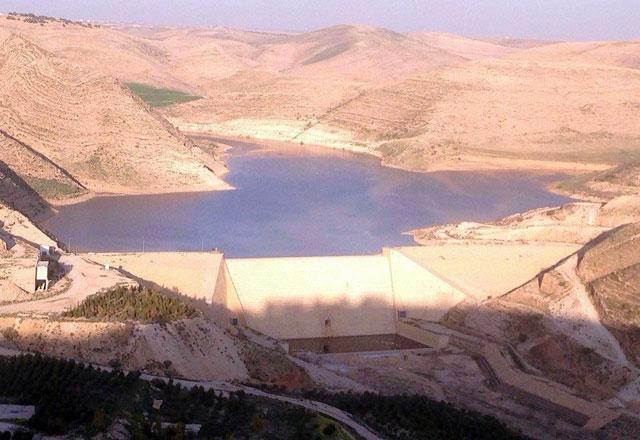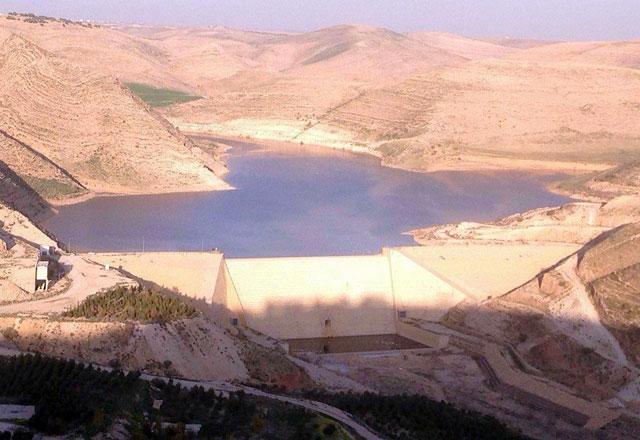You are here
Construction begins to increase Waleh Dam’s storage capacity
By Hana Namrouqa - Aug 09,2017 - Last updated at Aug 09,2017

The walls of the Waleh Dam will be raised by 15 metres to allow the storage of additional rainwater, according to officials (File photo)
AMMAN — Raising the walls of Madaba Governorate’s Waleh Dam began on Wednesday, under a project aimed at restoring the original environmental state of the Waleh Valley, officials said on Wednesday.
The construction of the project officially began under an agreement signed on Wednesday between Minister of Water and Irrigation Hazim El Naser and Minister of Environment Yaseen Khayyat, , according to officials.
The project aims at raising the walls of the dam to prevent it from overflowing almost every winter after it reaches its full capacity, Water Ministry’s Spokesperson Omar Salameh said, indicating that the project carries significant environmental and tourist dimensions as well.
“The storage capacity of the dam will increase, allowing it to collect more rainwater, which implies better recharging of aquifers. In addition, the project seeks to increase the flow of the stream in the Waleh Valley and therefore support tourism development in the area,” Salameh told The Jordan Times.
He underscored that the Cabinet approved the project’s studies in January, highlighting that the construction work is scheduled to be completed in two years.
Figures from the Water Ministry indicate that the project will raise the storage capacity of the dam from the current 9.6 million cubic metres (mcm) to 26.3mcm.
The walls of the Waleh Dam will be raised by 15 metres to allow the storage of additional rainwater, according to the ministry, which indicated in a previous statement that millions of cubic metres of water are wasted in uncollected runoff almost every winter when the dam reaches its full capacity and then overflows.
Raising the walls of the dam will cost JD27.5 million, according to El Naser, who said that the project is implemented under the Badia Rehabilitation Programme, which is funded by the environmental compensation granted to Jordan by the United Nations Compensation Committee (UNCC).
In 2005, the UNCC granted Jordan $160.5 million in compensation for damage incurred by the Kingdom’s water, environment, wildlife, marine life and agriculture sectors in the aftermath of the first Gulf War, in addition to $1.4 million to tackle the salinity of the country’s underground water basins.
The funds are being used to support projects that focus on rehabilitating the badia’s ecosystem to its former status, and tackling the negative consequences of random grazing and wildlife deterioration.
The ministry said that the additional water that will be stored at the dam will be used to provide Madaba Governorate, 30km southwest of Amman, with more drinking water.
Construction of the dam, located in Madaba, began in 1999, at a cost of JD24 million, 80 per cent of which was funded by a loan from the Arab Fund for Economic and Social Development, while the remainder was paid for by the Treasury. It became operational in 2002.
El Naser said in a statement e-mailed to The Jordan Times that the ministries of water and irrigation and environment work together to develop the area’s tourism and economy, indicating that they will also support “a pioneering agricultural project to grow irrigated fodder in the Waleh Valley”.
Related Articles
AMMAN — Construction work on a project to raise the walls of the Waleh Dam to more than double its capacity has commenced, a government offi
AMMAN — The government will float a tender next week to raise the walls of the Waleh Dam to more than double its capacity, government offici
AMMAN — The Waleh Dam in Madaba has attained its full capacity of 8.1 million cubic metres (mcm), the Ministry of Water and Irrigation said


















